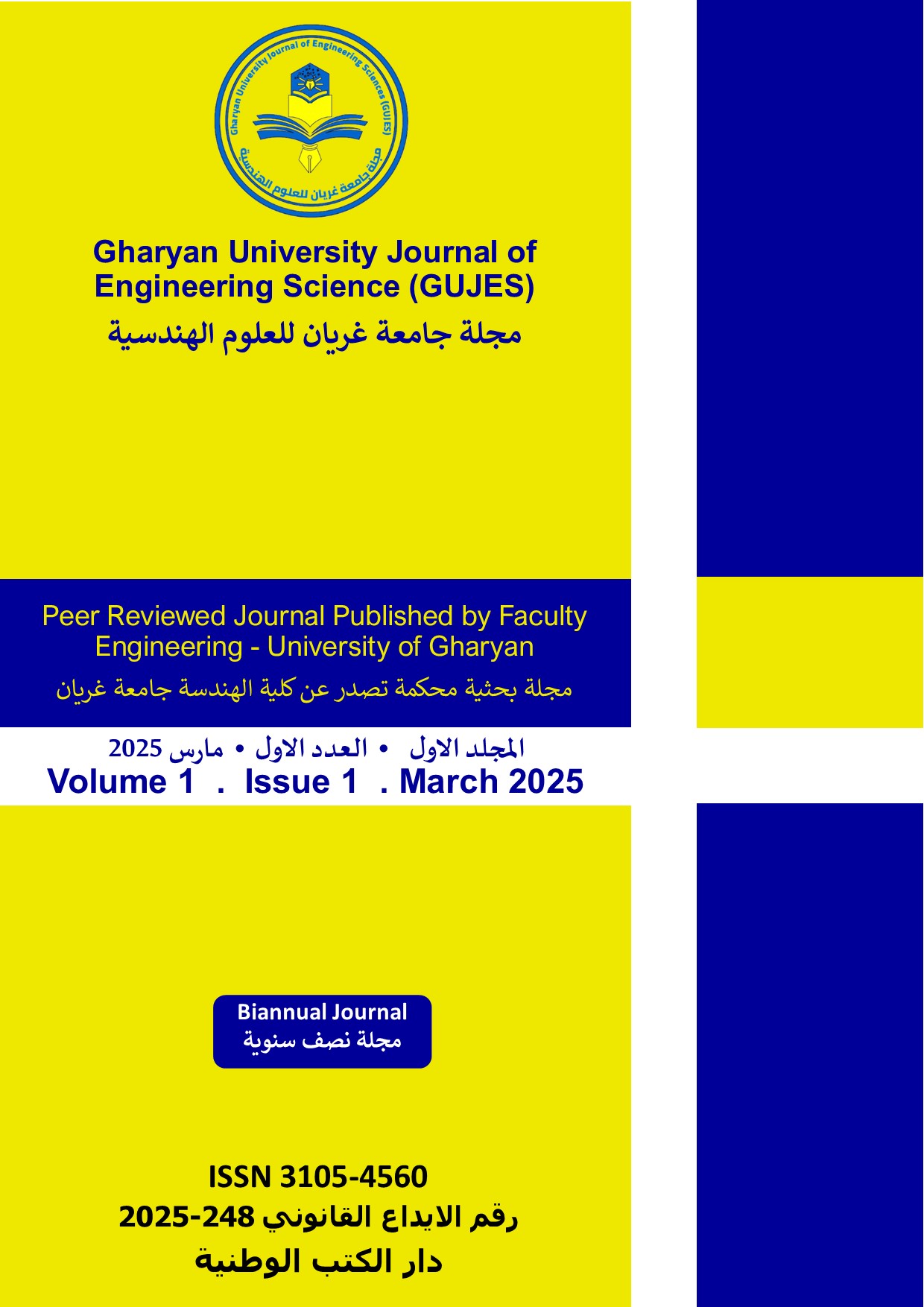Effect of Gully Erosion on the Slope Parallel to the Al-Rujban Mountain Road NW Libya
Abstract
Evaluating the impact of gully erosion on slopes parallel to mountain roads is crucial due to its role in altering slope geometry, thereby affecting overall slope stability. This study addresses the significant reduction in slope inclination from 60° (originally in 1984) to 35° caused by erosion, raising concerns about whether such changes enhance stability or increase slope fragility and collapse risk. One of the main objectives of this study was to analyze and evaluate the impact of gully erosion on slope stability, particularly by assessing changes in slope safety factors resulting from alterations in slope angles due to erosion. To achieve this, detailed field measurements were conducted to analyze the geometry of the gullies, complemented by laboratory tests using the direct shear apparatus to determine the cohesion and internal friction angle of slope materials under varying water content conditions. Additionally, the RocPlane software was employed to simulate the mechanical behavior of the slope and assess its stability under different scenarios. Results indicated that an increase in water content from 17% to 25% led to a marked decrease in cohesion (from 104 to 51 t/m²) and internal friction angle(from 22.2° to 16.5°). RocPlane analyses revealed a substantial decline in safety factors for slopes impacted by erosion and moisture—dropping to zero in some cases—while unaffected slopes maintained stability with a safety factor of 2.92. These findings highlight the critical role of gully erosion in reshaping slope geometry and compromising stability. The study recommends proactive removal of unstable rock blocks and enhancement of drainage systems to mitigate the risk of future slope failures.







